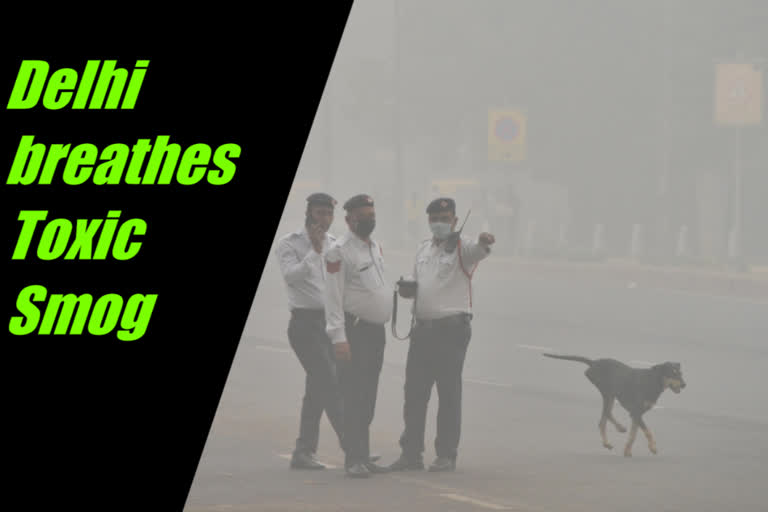New Delhi: The national capital of India is literally struggling to breathe. It has become a common occurrence every year in Delhi after Diwali. This year, the effects of air pollution are more pronounced.
The air quality in the city seemed to be better due to monsoons during August and September. While the smoke from Diwali crackers engulfed entire North India, Delhi suffered from the neighbouring states burning stubble.
Kejriwal government has declared a public health emergency in the event of the dangerous smog engulfing Delhi. Schools were closed till November 5th and construction activities have been banned. Implementing the odd-even scheme shows the gravity of the situation.
Though ministers are saying that the smoke from burning paddy stubble will be less due to incessant rains, the Air Quality Index (AQI) says otherwise.
If the AQI is between 400-500, the situation is considered dangerous. Given the fact that the AQI exceeded 500 in many parts of Delhi, flights had to be cancelled. People are unable to step out without masks in surrounding areas like Gurugram, Noida, Faridabad and Ghaziabad. States like Telangana, Maharashtra, Madhya Pradesh, Chhattisgarh and Odisha also face the brunt of this air pollution.
The National Green Tribunal (NGT) ordered a ban on stubble burning four years ago. Punjab and Haryana governments assured the enforcement of NGT guidelines. The central government allocated Rs.1,100 crores towards its implementation but the situation remained the same.
If one ton of stubble is burnt, 60 kgs of Carbon Monoxide, 1,400 kgs of greenhouse gases, 3 kgs Sulphur Dioxide will be emitted. Haryana, Punjab and Uttar Pradesh together burn about 5 crore tons of stubble every year. Besides emitting toxic gases, thousands of useful bacteria species are dying.
The moisture content of the land is decreasing. The Environmental Pollution Prevention and Control Authority (EPCA) asked the governments of Haryana, Punjab and Delhi to take stringent measures. Experts suggest cultivation of millets as an alternative to sugarcane and paddy.
The menace of air pollution is not limited to Delhi or a select few cities. Two-thirds of the Indian cities have become poisonous gas chambers over the course of time. India stood last among the 180 surveyed countries for AQI. On average, air pollution is causing 1 out of 8 deaths nationwide.
Deaths due to air pollution are declining in China, which took severe action against industrial pollution. Meanwhile, India recorded a 23 per cent increase in the number of deaths caused by air pollution.
All India Institute of Medical Sciences (AIIMS) has been warning about the heart and lung ailments due to increased pollution. A recent study conducted by the University of Chicago revealed that toxic environment reduces the lifespan of citizens by seven years.
Even in relatively small towns like Kurnool and Warangal, the incidence of Nickel and Arsenic in the air is high. Air contamination directly impacts the lives of about 66 crore Indians. Nations like Australia, Canada and Barbados are setting an example by creating awareness among its citizens.
India must take a leaf out of their book and create environmental acts accordingly. Only if the government and citizens work collectively, climate calamities can be prevented.
Read: LIVE: Delhi-NCR pollution: SC slams Punjab govt on stubble burning



